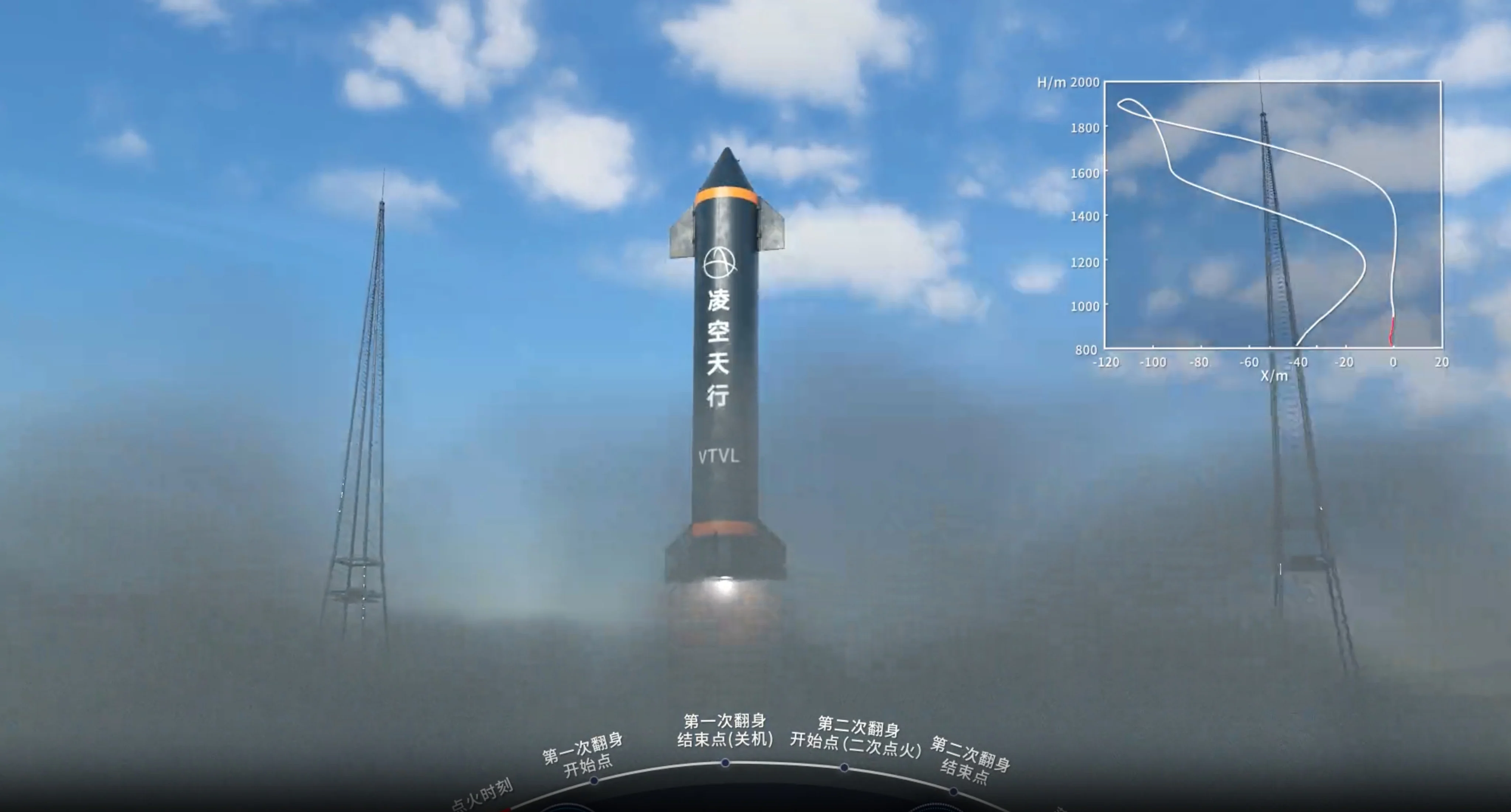By Zhang Tong
A start-up company in southwestern China has revealed its latest innovations in rocket technology, highlighting how the country’s cutting-edge aerospace capabilities are expanding into the civilian sector.
Lingkong Tianxing Technology unveiled its self-developed reusable liquid rocket with an animated video simulation posted to its official website on Tuesday. The clip showcased advanced flight control technologies, including mid-air flips and in-flight reignition.
The clip shows the VTVL (vertical take-off and vertical landing) rocket igniting and ascending to an altitude of nearly 2km (1.2 miles), where control surfaces on both sides of the nose shift angles, transitioning the rocket from vertical ascent to an upwards-slanting trajectory in a ballet-like motion.
After around 30 seconds, the engine shuts down upon reaching peak altitude and the rocket executes its first flip.
The rocket then begins to descend nose-first, slowing down at a high “angle of attack” – a term referring to the angle between the rocket’s “longitudinal axis” or nose direction and its direction of motion through the air. A high angle helps to generate aerodynamic drag for slowing down.
About 10 seconds later, the engine reignites as the wings adjust their angles, enabling the rocket to perform a second flip and return to a nose-up position.
It then descends steadily under engine control, landing vertically in a double-layered elastic net on the ground.
The rocket uses liquid fuel propulsion and features variable thrust, according to the company based in Chengdu, Sichuan province. Also, unlike traditional hard landings, a soft landing minimised structural damage, paving the way for reusability, the company said.
“An actual trial is expected to launch soon. The experiment will lay the technical groundwork for future suborbital tourism and reusable transport platforms,” it said.
Alongside the clip, the company posted an image of a rocket launched from a desert and streaking across the Milky Way alongside meteors. It appeared to tease something unprecedented that the company planned to do – create a “meteor shower” in the desert.
SpaceX’s Falcon 9 launches have seen the rocket’s exhaust plume leave jellyfish-like trails in the sky, shared by many social media users in the United States as a visual spectacle. Generating artificial meteor showers within the atmosphere with a rocket is expected to offer an even more striking show.
While natural meteor showers are unpredictable and often hard to observe, this kind of “rocket meteor shower” offered both controllability and spectacle, blending aerospace technology with artistic romance, the company said.
Reports suggest that Lingkong Tianxing aims to develop cost-effective next-generation supersonic passenger aircraft to revolutionise global air transport, potentially halving international flight times.
Last December, the company test-fired its JinDou-400 engine, which operated for 45 seconds at speeds of between Mach 3.3 and 4.1 at altitudes of 14km to 23km.
In January this year, the team unveiled an uncrewed supersonic aircraft prototype, named Cuantianhou or “Soaring Stone Monkey”. The prototype – which is seven metres (23 feet) long and weighs about 1.5 tonnes (3,307lbs) – is equipped with two engines and reached Mach 4 at 20km in test flight, twice the speed of the retired Concorde.
According to the company road map, the Cuantianhou is expected to complete its maiden flight in 2026, followed by its supersonic passenger plane Dasheng in 2030.
“China currently leads the world in hypersonic technology,” the company stated.
“Hypersonics serves as a foundational technology for both aerospace re-entry and high-speed transport, representing a critical intersection between aeronautics and astronautics. It also holds immense commercial value across scientific research and diverse civilian applications,” it noted.
“Beyond passenger jets, we are also exploring other commercial applications.”
